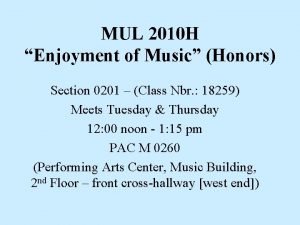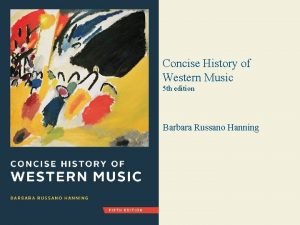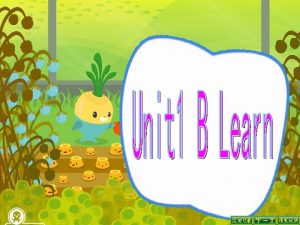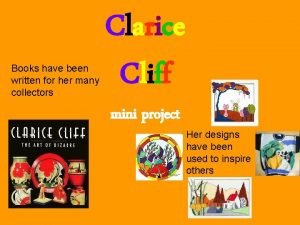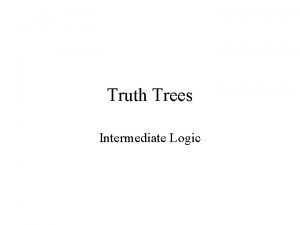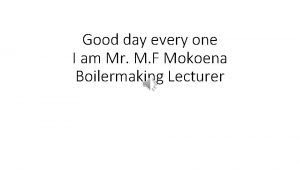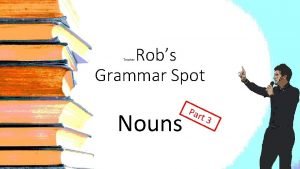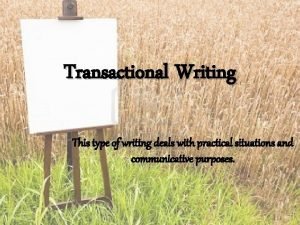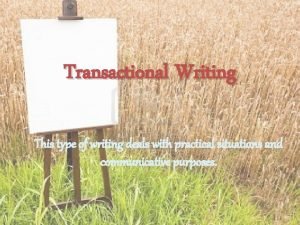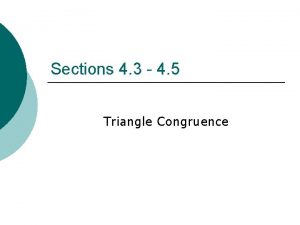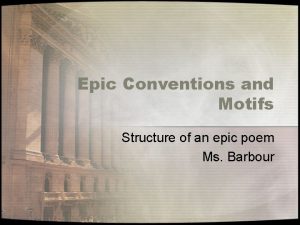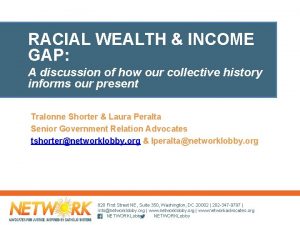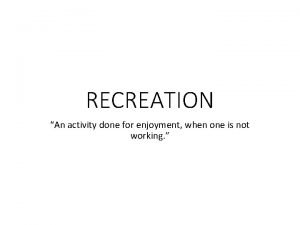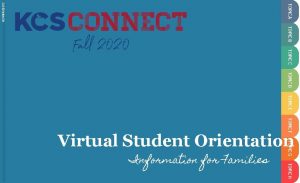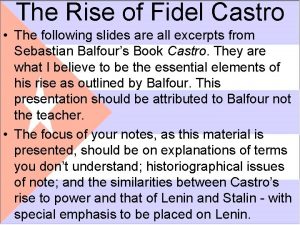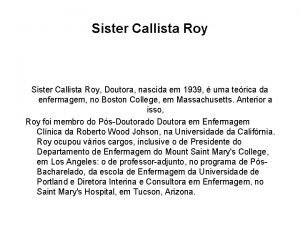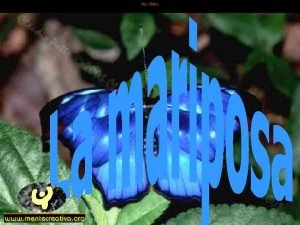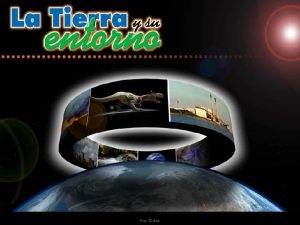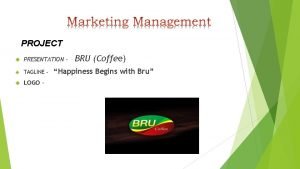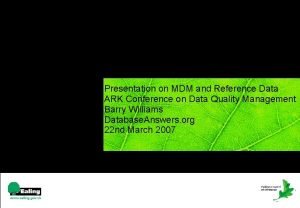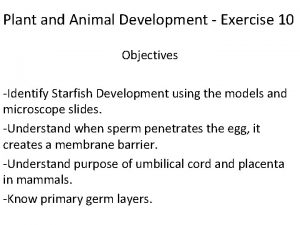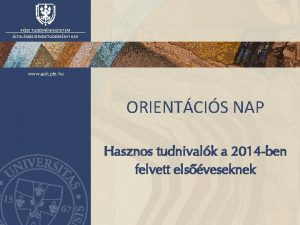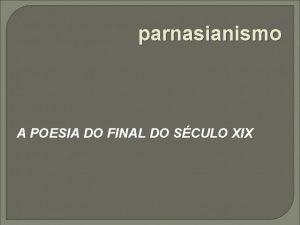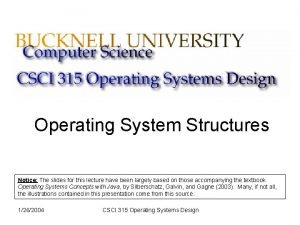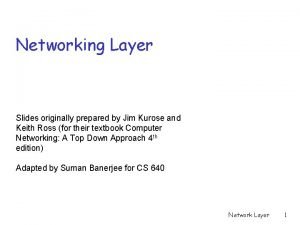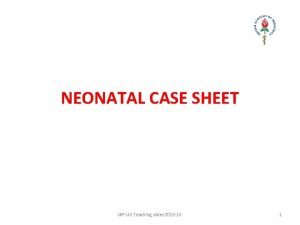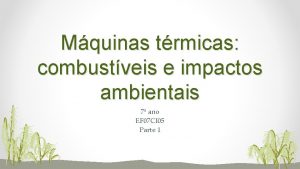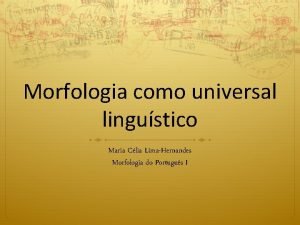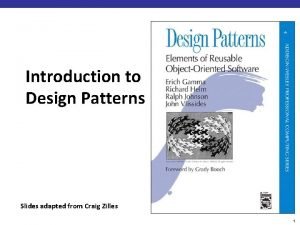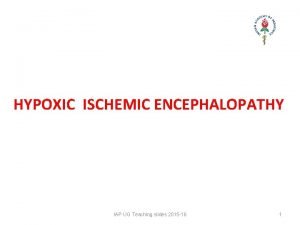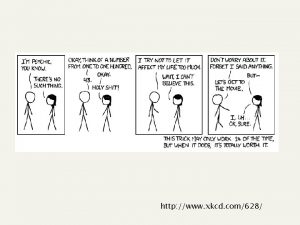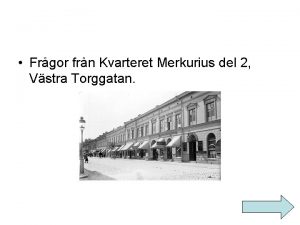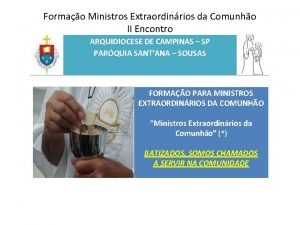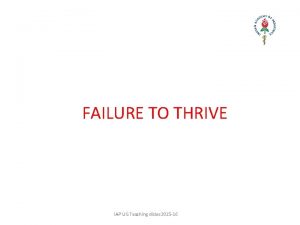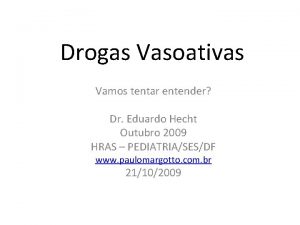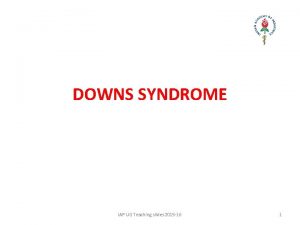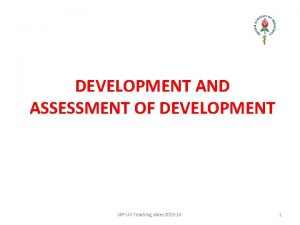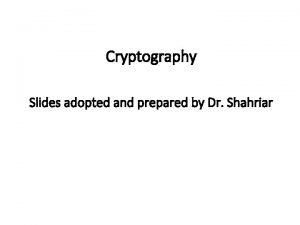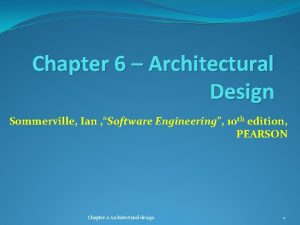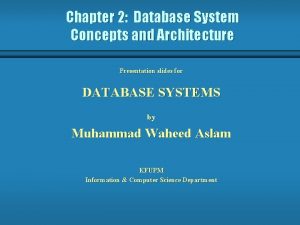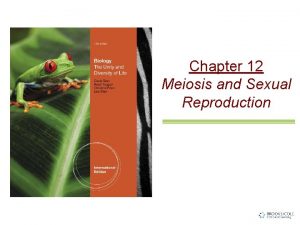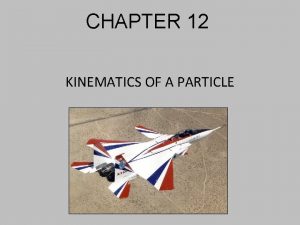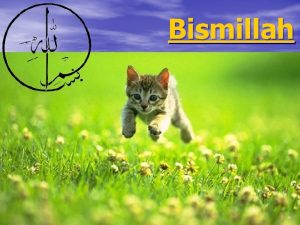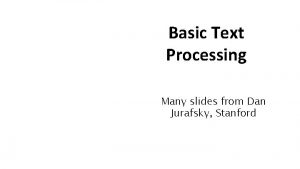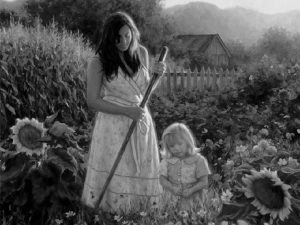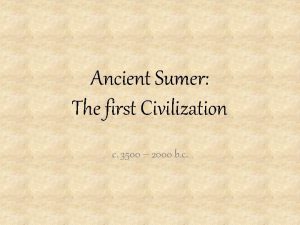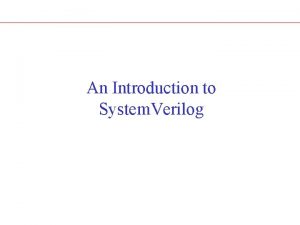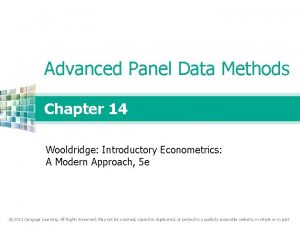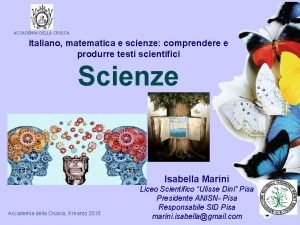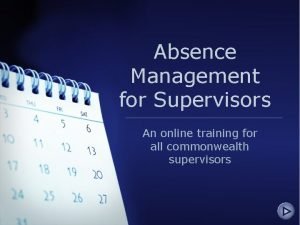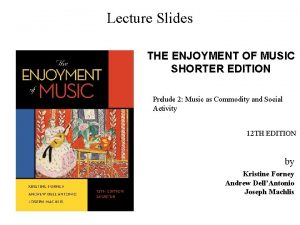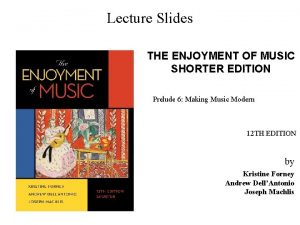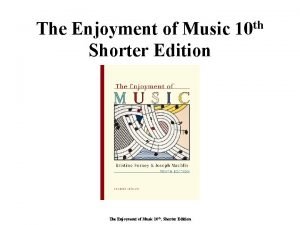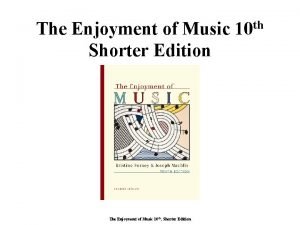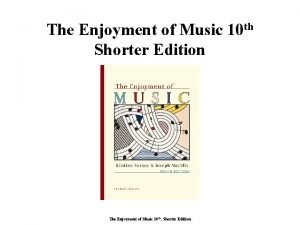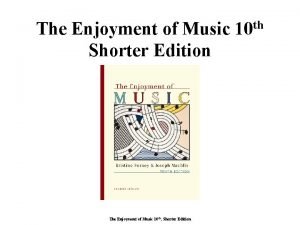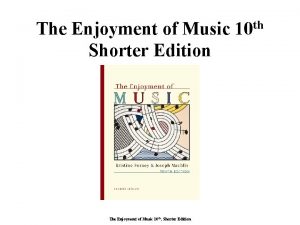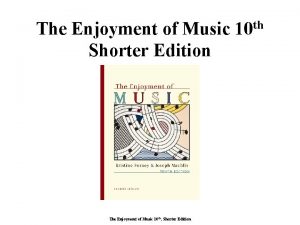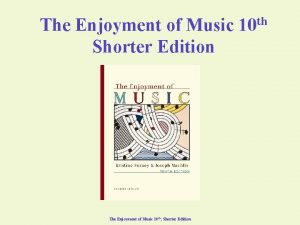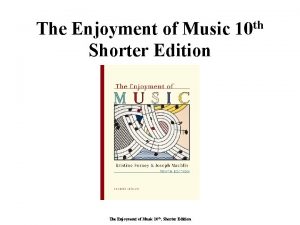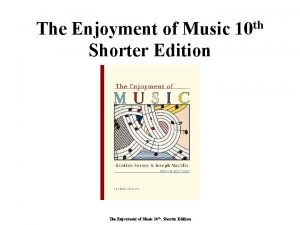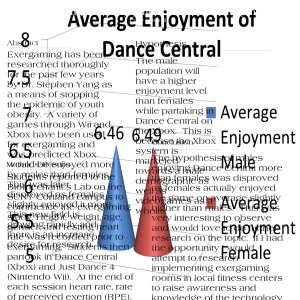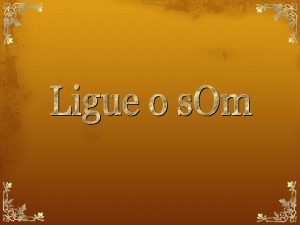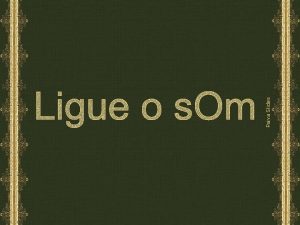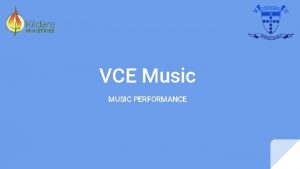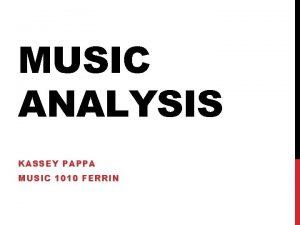Lecture Slides THE ENJOYMENT OF MUSIC SHORTER EDITION



















































































































































- Slides: 147

Lecture Slides THE ENJOYMENT OF MUSIC SHORTER EDITION Prelude 7: Beyond Modernism? 12 TH EDITION by Kristine Forney Andrew Dell’Antonio Joseph Machlis

Prelude 7 Beyond Modernism?

The Postmodern Turn • No agreed-upon definition of postmodernism • Best to talk about several different departures from the principles of modernism • Experimentation: new media, new materials, new techniques • All art—highbrow or lowbrow—has the same potential for greatness

Prelude 7: Beyond Modernism?

Art, Film, Literature • Architecture trends toward decorative elements • Abstract expressionism freed painting from the need to imitate objects in the real world • New kind of Dadaist realism, pop art • Other postmodern categories – New classicism, minimalism, performance and multimedia art, earthworks

Prelude 7: Beyond Modernism?

Prelude 7: Beyond Modernism?

Prelude 7: Beyond Modernism?

Prelude 7: Beyond Modernism?

Art, Film, Literature • Pluralistic attitude toward gender, sexual orientation, and ethnicity • Recognizable images, collage and quotation • Film – Godard, Fellini, Antonioni – Campion, Tarantino, Reggio • Literature – Doctorow, Márquez, Vonnegut – Angelou, Morrison, Tan – Rowling

Prelude 7: Beyond Modernism?

Prelude 7: Beyond Modernism?

Prelude 7: Beyond Modernism?

Music in a Postmodern World • • Mass media is compatible with art Cultural saturation of technology Musicals, film, and video game music Some continued on the path of Schoenberg, others developed the anti-rational element

Prelude 7: Beyond Modernism?

Music as Protest • Bob Dylan and Pete Seeger, the 1960 s civil rights movement • Vietnam War and the Woodstock Festival • 1980 s punk rock and rap • Musical feminism • Wars in Iraq and Afghanistan

Prelude 7: Beyond Modernism?

Prelude 7: Beyond Modernism?

Prelude 7: Beyond Modernism?

New Technologies • Mid-twentieth-century electronic music – Musique concrète – Electronische Musik • Later the Moog synthesizer, the Yamaha DX 7, MIDI, and digital sampling

Prelude 7: Beyond Modernism?

Encounter: Music Technology • Technology can enhance the creative process • Tod Machover explores interactivity using technology – Hyperscore, Hyperinstruments • Machover also interesed in popular culture – Vinyl. Cello, sci-fi operas • Machover’s Hyperpiano concerto Jeux Deux mvt. III

Prelude 7: Beyond Modernism?

Prelude 7: Beyond Modernism?

Prelude 7: Beyond Modernism?

Lecture Slides THE ENJOYMENT OF MUSIC SHORTER EDITION http: //digital. wwnorton. com/enjmusic 12 s 12 TH EDITION by Kristine Forney Andrew Dell’Antonio Joseph Machlis

Lecture Slides THE ENJOYMENT OF MUSIC SHORTER EDITION Chapter 62: New Sound Palettes: Mid-Twentieth-Century American Experimentalists 12 TH EDITION by Kristine Forney Andrew Dell’Antonio Joseph Machlis

Chapter 62: New Sound Palettes: Mid-Twentieth-Century American Experimentalists

New Sound Palettes: Mid-Twentieth. Century American Experimentalists • Musicians have always been expanding their sound-production resources • Some have reached to other cultures and/or inventiveness

Early Experiments • Henry Cowell (1897– 1965) combined Asian instruments with Western ensembles – Also piano works included tone clusters and playing on the piano strings directly • Harry Partch (1901– 1974), proponent of microtones – Developed a scale with 43 microtones – Built/adapted instruments to play it

The Music of John Cage • Eternally questing artist • New sounds and concepts • Idea of chance, or aleatoric, music

Sonatas and Interludes • Sixteen sonatas separated by interludes (LG 55) • For prepared piano – Materials inserted between the piano strings – Varied timbres

John Cage (1912– 1992) • • • Early interest in non-Western scales In 1938, invented the prepared piano Indeterminacy and chance music Explored the role of silence in 4'33" Raised profound questions about the nature of music

Chapter 62: New Sound Palettes: Mid-Twentieth-Century American Experimentalists

Chapter 62: New Sound Palettes: Mid-Twentieth-Century American Experimentalists

Chapter 62: New Sound Palettes: Mid-Twentieth-Century American Experimentalists

George Crumb and Avant-Garde Virtuosity • Avant-garde music requires a new breed of players and singers • George Crumb turns ordinary instruments (including the voice) into the extraordinary

Caballito negro (Little Black Horse) (LG 56) • Last of three songs in Crumb’s second book of madrigals, poetry by Lorca • scored for soprano, percussion, and flute/piccolo – Extended techniques

George Crumb (b. 1929) • Retired from composition faculty of the University of Pennsylvania in 1999 • Special affinity for the poetry of Lorca • Unusual vocal and instrumental effects • Creating new sonorities and exploring theatrical concepts

Chapter 62: New Sound Palettes: Mid-Twentieth-Century American Experimentalists

Chapter 62: New Sound Palettes: Mid-Twentieth-Century American Experimentalists

Chapter 62: New Sound Palettes: Mid-Twentieth-Century American Experimentalists

Encounter: Javanese Gamelan • Westerners fascinated by gamelan since 1889 Paris World Exhibition • Orchestra of metallic percussion found on Indonesian islands of Java, Bali, and Sunda • Ritual ceremonies, court performances, and shadow-puppet theater (wayang)

Encounter: Javanese Gamelan • Shadow-puppet plays begin early evening and continue until dawn • In Javanese music, the interaction of the melodic movement with a cyclical rhythmic structure determines the form of the work

Chapter 62: New Sound Palettes: Mid-Twentieth-Century American Experimentalists

Chapter 62: New Sound Palettes: Mid-Twentieth-Century American Experimentalists

Chapter 62: New Sound Palettes: Mid-Twentieth-Century American Experimentalists

Lecture Slides THE ENJOYMENT OF MUSIC SHORTER EDITION http: //digital. wwnorton. com/enjmusic 12 s 12 TH EDITION by Kristine Forney Andrew Dell’Antonio Joseph Machlis

Lecture Slides THE ENJOYMENT OF MUSIC SHORTER EDITION Chapter 63: Staged Sentiment: Bernstein and American Musical Theater 12 TH EDITION by Kristine Forney Andrew Dell’Antonio Joseph Machlis

Chapter 63: Staged Sentiment: Bernstein and American Musical Theater

Staged Sentiment: Bernstein and American Musical Theater • American musical theater rooted in the U. S. • influential and popular all over the world • Themes tend to be current, relevant, and vital – One such theme is urban life

Musical Theater in North America • • Mid-1800 s Manhattan street called Broadway Minstrel shows giving way to vaudeville Vaudeville expanded into the variety show American musical theater developed from the variety show and the European operetta – More serious dramatic elements after 1940 s

Chapter 63: Staged Sentiment: Bernstein and American Musical Theater

Leonard Bernstein and West Side Story • Bernstein dedicated his life to promoting concert music to the general public • West Side Story (LG 57) – A retelling of Romeo and Juliet – Street gangs Jets and Sharks – Star-crossed lovers Tony and Maria – Latin dance music and jazz

Interface: Music as Literature • Great literature has spawned countless ballets, operas, programmatic works, and musicals • The use of familiar literature helps engage audiences while exposing them to new sights and sounds

Chapter 63: Staged Sentiment: Bernstein and American Musical Theater

Leonard Bernstein (1918– 1990) • Born in Massachusetts, went to Harvard and the Curtis Institute • Assistant conductor of New York Philharmonic; later music director • Straddles the worlds of serious and popular music • Vivid projection of NYC in his theater music

Chapter 63: Staged Sentiment: Bernstein and American Musical Theater

Chapter 63: Staged Sentiment: Bernstein and American Musical Theater

Chapter 63: Staged Sentiment: Bernstein and American Musical Theater

Chapter 63: Staged Sentiment: Bernstein and American Musical Theater

Chapter 63: Staged Sentiment: Bernstein and American Musical Theater

Chapter 63: Staged Sentiment: Bernstein and American Musical Theater

Lecture Slides THE ENJOYMENT OF MUSIC SHORTER EDITION http: //digital. wwnorton. com/enjmusic 12 s 12 TH EDITION by Kristine Forney Andrew Dell’Antonio Joseph Machlis

Lecture Slides THE ENJOYMENT OF MUSIC SHORTER EDITION Chapter 64: Less is More: Reich and Minimalist Music 12 TH EDITION by Kristine Forney Andrew Dell’Antonio Joseph Machlis

Chapter 64: Less is More: Reich and Minimalist Music

Less is More: Reich and Minimalist Music • The search for new musical “hooks” has been an ongoing one • One noteworthy approach comes from the tradition of process music and minimalism

Chapter 64: Less is More: Reich and Minimalist Music

From Twelve-Tone to Process and Phase • The scientific nature of serialism appealed to some • A new, also scientific way to approach stable harmonies was found in process music • Developed through technology into phase music • Phase music later by live musicians

Steve Reich (b. 1936) • Born in NYC, studied modernist composition at Juilliard • Wanted to write tonal music, pioneered process music • Studied West African drumming and Balinese gamelan • Judaic heritage central to many works

Chapter 64: Less is More: Reich and Minimalist Music

African Influence • In the 1970 s Reich’s approach shifted • Inspired by polyrhythm of West Africa • Led him to think about process music differently • Now known as minimalism

Chapter 64: Less is More: Reich and Minimalist Music

Electric Counterpoint (LG 58) • Last of a series of works he called “counterpoint”; this one for twelve guitars • Very different approach to harmony and complexity from goal-directed tonality • The “hook” is less the initial musical idea, but how that idea is gradually combined with itself

Chapter 64: Less is More: Reich and Minimalist Music

Encounter: East African Drumming • Europeans once viewed African music to be “primitive” • The royal drum ensembles of Uganda consist of both pitched and unpitched drums, with pentatonic melodies and polyrhythms

Chapter 64: Less is More: Reich and Minimalist Music

Chapter 64: Less is More: Reich and Minimalist Music

Chapter 64: Less is More: Reich and Minimalist Music

Chapter 64: Less is More: Reich and Minimalist Music

Lecture Slides THE ENJOYMENT OF MUSIC SHORTER EDITION http: //digital. wwnorton. com/enjmusic 12 s 12 TH EDITION by Kristine Forney Andrew Dell’Antonio Joseph Machlis

Lecture Slides THE ENJOYMENT OF MUSIC SHORTER EDITION Chapter 65: Returning with Interest: Dylan, Corigliano, and Postmodern Reworkings 12 TH EDITION by Kristine Forney Andrew Dell’Antonio Joseph Machlis

Chapter 65: Returning with Interest: Dylan, Corigliano, and Postmodern Reworkings

Returning with Interest: Dylan, Corigliano, and Postmodern Reworkings • Copyright laws have become increasingly strict • In earlier times, using material from another composer was considered a tribute

Bob Dylan as Singer-Songwriter • Dylan is an outstanding singer-songwriter • Musical style distinctive • Form and melody are always irregular and surprising • Lyrics are full of imagery, unusual forms and metric patterns

Bob Dylan (b. 1941) • Born in Minnesota • Moved to NY and met his idol Woody Guthrie • Made a name for himself as a songwriter and protest singer • In 1965 started using electric instruments, spawned a decade of experimentation • Dylan is still active today

Chapter 65: Returning with Interest: Dylan, Corigliano, and Postmodern Reworkings

Dylan’s Mr. Tambourine Man (LG 59) • Song on the 1965 album Bringing it All Back Home • Opens with what reveals itself to be a refrain • Each line of the verses a different length, all end inconclusively • Successful cover version in 1965 by The Byrds – “folk rock, ” with added electric guitars and drums

Chapter 65: Returning with Interest: Dylan, Corigliano, and Postmodern Reworkings

Chapter 65: Returning with Interest: Dylan, Corigliano, and Postmodern Reworkings

John Corigliano and the Contemporary Song Cycle • Corigliano writes music rooted in the language of the past • Also redefines genres • Often writes works for specific ensembles or individuals

Corigliano’s Mr. Tambourine Man • Sylvia Mc. Nair commissioned Corigliano to write a song cycle for her in 2000 • Used lyrics/poems of seven Dylan songs (but not melodies) • Originally for voice and piano, later orchestrated; songs unified by recurring motives • Prelude (LG 60) effervescent and quirky setting of the Dylan poem

John Corigliano (b. 1938) • Born in New York City into a musical family • Studied at Columbia and the Manhattan School of Music • Prestigious teaching positions in New York • Has won every distinguished award possible for his music, including an Academy Award and a Grammy • Writes in diverse styles

Chapter 65: Returning with Interest: Dylan, Corigliano, and Postmodern Reworkings

Chapter 65: Returning with Interest: Dylan, Corigliano, and Postmodern Reworkings

Lecture Slides THE ENJOYMENT OF MUSIC SHORTER EDITION http: //digital. wwnorton. com/enjmusic 12 s 12 TH EDITION by Kristine Forney Andrew Dell’Antonio Joseph Machlis

Lecture Slides THE ENJOYMENT OF MUSIC SHORTER EDITION Chapter 66: Neo-Romantic Evocations: Higdon and Program Music into the Twenty -First Century 12 TH EDITION by Kristine Forney Andrew Dell’Antonio Joseph Machlis

Chapter 66: Neo-Romantic Evocations: Higdon and Program Music into the Twenty. First Century

Neo-Romantic Evocations: Higdon and Program Music into the Twenty-First Century • Neo-Romanticism – Embracing aspects of nineteenth-century orchestral sound, including program music • “Modernizing” the nineteenth-century orchestral tradition

A New Romanticism? • Romantic style of the 1800 s never really went away; still performed in concert halls • Some composers maintained a commitment to Romanticism, updating it – Samuel Barber’s Adagio for Strings • Reclaiming nineteenth-century harmonic and melodic language in a new context

Jennifer Higdon and blue cathedral (LG 61) • Higdon among the most widely performed living American composers – Richly neo-Romantic • Written in 2000, blue cathedral a tone poem – Personal grief over death of her brother • Maintains the tradition of program music

Jennifer Higdon (b. 1962) • Born in Brooklyn • Studied with George Crumb; inspired by the Beatles • Output spans most genres, described as having an “American” sound • Rooting in tonality, neo-Romanticism • Pulitzer prize in 2010; teaches composition at the Curtis Institute

Chapter 66: Neo-Romantic Evocations: Higdon and Program Music into the Twenty. First Century

Chapter 66: Neo-Romantic Evocations: Higdon and Program Music into the Twenty. First Century

Chapter 66: Neo-Romantic Evocations: Higdon and Program Music into the Twenty. First Century

Lecture Slides THE ENJOYMENT OF MUSIC SHORTER EDITION http: //digital. wwnorton. com/enjmusic 12 s 12 TH EDITION by Kristine Forney Andrew Dell’Antonio Joseph Machlis

Lecture Slides THE ENJOYMENT OF MUSIC SHORTER EDITION Chapter 67: Underscoring Meaning: Music for Film 12 TH EDITION by Kristine Forney Andrew Dell’Antonio Joseph Machlis

Chapter 67: Underscoring Meaning: Music for Film

Underscoring Meaning: Music for Film • Multimedia often powerful; collaboration of several creative individuals • Dramatic musical resources pioneered onstage now transformed for the screen – Film, television, video games

Sound and Film • Music has played an indispensible role in memorable film moments • Reflects the emotions of a given scene • Creates irony through juxtaposition • Creates a sense of time and place • Two main types of music in film – Underscoring: comes from unseen source – Source music: music functions as part of the drama itself

Chapter 67: Underscoring Meaning: Music for Film

John Williams: Star Wars and Beyond • Mastery of leitmotif technique • Revival of the grand symphonic film score, accessible neo-Romanticism • Soundtrack for Star Wars remarkable achievement – Leitmotifs carried across prequels and sequels – Imperial March (LG 62)

John Williams (b. 1932) • Born on Long Island, New York • Composed for television in 1950 s; shifted to film in 1960 s • By the end of 1970 s was Hollywood’s foremost composer • Also composes classical symphonic works and was conductor of the Boston Pops Orchestra

Chapter 67: Underscoring Meaning: Music for Film

Chapter 67: Underscoring Meaning: Music for Film

Chapter 67: Underscoring Meaning: Music for Film

Tan Dun: Blending East and West • Tan Dun is a composer of both classical and film music • Score for Couching Tiger, Hidden Dragon won an Academy Award – Blending of Asian and Western music – Farewell (LG 63) combines two melodies representing a pair of lovers: one played by the cello, the other by an erhu

Tan Dun (b. 1957) • Born in China, grew up during Cultural Revolution • Inspired to explore Western music • His own music was banned in China, so he left for the United States • Works combine Chinese and Western styles and instruments

Chapter 67: Underscoring Meaning: Music for Film

Chapter 67: Underscoring Meaning: Music for Film

Chapter 67: Underscoring Meaning: Music for Film

Encounter: Video Games • Music plays an important role in gaming – Soundtracks as well as games for music-making • Source music provides feedback to a player’s actions • Underscoring adds intensity and meaning • Nobou Uematsu (b. 1959) – “Aerith’s Theme” from Final Fantasy VII (1997)

Chapter 67: Underscoring Meaning: Music for Film

Chapter 67: Underscoring Meaning: Music for Film

Lecture Slides THE ENJOYMENT OF MUSIC SHORTER EDITION http: //digital. wwnorton. com/enjmusic 12 s 12 TH EDITION by Kristine Forney Andrew Dell’Antonio Joseph Machlis

Lecture Slides THE ENJOYMENT OF MUSIC SHORTER EDITION Chapter 68: Icons in Sound: Tavener and Postmodern Orthodoxy 12 TH EDITION by Kristine Forney Andrew Dell’Antonio Joseph Machlis

Chapter 68: Icons in Sound: Tavener and Postmodern Orthodoxy

Icons in Sound: Tavener and Postmodern Orthodoxy • After about 1800, Europeans embraced secular music and concert performances of sacred works • Much of the music we encounter today has a non-sacred purpose • But composers have never stopped focusing on spiritual goals

Spiritual Minimalism • Nonpulsed; chains of modal or tonal progressions, inspired by religious beliefs – Górecki, Pärt • Tavener infuses elements of neo-Romanticism with a devout spiritualism

Chapter 68: Icons in Sound: Tavener and Postmodern Orthodoxy

Tavener and Greek Orthodoxy • Tavener converted to Greek Orthodoxy • Eastern Christian Church separated from the Western in 1054 • Greek Orthodox chant uses microtones and irregular rhythms • Tavener’s music also relies on repetition and icons

John Tavener (1944– 2013) • Born in London • Early works show modernist influences • After converting to Greek Orthodoxy in mid 1970 s, refocused his attention to mystical topics • Expanded his style into instrumental genres • Later sought to combine the spiritual messages of many faiths

Chapter 68: Icons in Sound: Tavener and Postmodern Orthodoxy

A Hymn to the Mother of God (LG 64) • Scored for two six-voice choirs • Celebrates Mary as Mother of God • Use of drones and harmonies based on Greek Orthodox modes • Short repeating motives recall minimalism • Polyphonic choral writing inspired by Medieval and Renaissance church music

Chapter 68: Icons in Sound: Tavener and Postmodern Orthodoxy

Chapter 68: Icons in Sound: Tavener and Postmodern Orthodoxy

Lecture Slides THE ENJOYMENT OF MUSIC SHORTER EDITION http: //digital. wwnorton. com/enjmusic 12 s 12 TH EDITION by Kristine Forney Andrew Dell’Antonio Joseph Machlis

Lecture Slides THE ENJOYMENT OF MUSIC SHORTER EDITION Chapter 69: Reality Shows: Adams and Contemporary Opera 12 TH EDITION by Kristine Forney Andrew Dell’Antonio Joseph Machlis

Chapter 69: Reality Shows: Adams and Contemporary Opera

Reality Shows: Adams and Contemporary Opera • Sometimes deeper truths are sought in stories based on fiction • But history has also always been represented in opera • Not meant to be a documentary

John Adams and Post-Minimalism • John Adams writes accessible and deeply expressive music • Minimalist style fused with neo-Romanticism

John Adams (b. 1947) • Educated at Harvard – Steeped in serialism, but listened to rock in dorm room • Moved to San Francisco; advocate for contemporary music • Began as a minimalist; gradual incorporation of neo-Romantic sumptuousness • Stage works often topical and controversial

Chapter 69: Reality Shows: Adams and Contemporary Opera

Doctor Atomic • Adams’s third opera focuses on the last days and hours before the first atomic test in 1945 – Hopes and fears, awe and trepidation – Act II chorus “At the sight of this” (LG 65) captures this tension, with text from the Bhagavad Gita • Hugely complex subject, combining science and art

Chapter 69: Reality Shows: Adams and Contemporary Opera

Chapter 69: Reality Shows: Adams and Contemporary Opera

Lecture Slides THE ENJOYMENT OF MUSIC SHORTER EDITION http: //digital. wwnorton. com/enjmusic 12 s 12 TH EDITION by Kristine Forney Andrew Dell’Antonio Joseph Machlis
 Chapter 10 western musical instruments
Chapter 10 western musical instruments Mul 2010
Mul 2010 Online music portfolio
Online music portfolio A small child slides down the four frictionless slides
A small child slides down the four frictionless slides A spring loaded gun shoots a plastic ball
A spring loaded gun shoots a plastic ball Principles of economics powerpoint lecture slides
Principles of economics powerpoint lecture slides Machine learning lecture slides
Machine learning lecture slides Business communication lecture slides
Business communication lecture slides 01:640:244 lecture notes - lecture 15: plat, idah, farad
01:640:244 lecture notes - lecture 15: plat, idah, farad Using mis 10th edition
Using mis 10th edition Report
Report Concise history of western music 5th edition
Concise history of western music 5th edition Why school days should be shorter
Why school days should be shorter Taller and younger shorter and older
Taller and younger shorter and older The shorter sides are called
The shorter sides are called Colley shorter
Colley shorter Short truth table
Short truth table The shorter and narrower part of the framing square
The shorter and narrower part of the framing square Put apostrophe: mices tails are shorter than rats tails.
Put apostrophe: mices tails are shorter than rats tails. Pqdn
Pqdn Customary measurement system
Customary measurement system Transactional writing dialogue
Transactional writing dialogue Transactional writing exemplars
Transactional writing exemplars Can the triangles be proven congruent? if so, how?
Can the triangles be proven congruent? if so, how? Taller younger sister shorter older brother
Taller younger sister shorter older brother Short transactional text examples
Short transactional text examples Epic poem structure
Epic poem structure Michelle shorter
Michelle shorter Tralonne shorter
Tralonne shorter An activity done for enjoyment when one is not working.
An activity done for enjoyment when one is not working. Enjoyment verb
Enjoyment verb Enjoyment
Enjoyment Romantic period instrument
Romantic period instrument Rhythm music appreciation
Rhythm music appreciation Music that employs electronic musical instruments
Music that employs electronic musical instruments Classification of pamulinawen
Classification of pamulinawen Hình ảnh bộ gõ cơ thể búng tay
Hình ảnh bộ gõ cơ thể búng tay Ng-html
Ng-html Bổ thể
Bổ thể Tỉ lệ cơ thể trẻ em
Tỉ lệ cơ thể trẻ em Gấu đi như thế nào
Gấu đi như thế nào Thang điểm glasgow
Thang điểm glasgow Bài hát chúa yêu trần thế alleluia
Bài hát chúa yêu trần thế alleluia Môn thể thao bắt đầu bằng từ đua
Môn thể thao bắt đầu bằng từ đua Thế nào là hệ số cao nhất
Thế nào là hệ số cao nhất Các châu lục và đại dương trên thế giới
Các châu lục và đại dương trên thế giới Công thức tính độ biến thiên đông lượng
Công thức tính độ biến thiên đông lượng Trời xanh đây là của chúng ta thể thơ
Trời xanh đây là của chúng ta thể thơ Cách giải mật thư tọa độ
Cách giải mật thư tọa độ 101012 bằng
101012 bằng độ dài liên kết
độ dài liên kết Các châu lục và đại dương trên thế giới
Các châu lục và đại dương trên thế giới Thơ thất ngôn tứ tuyệt đường luật
Thơ thất ngôn tứ tuyệt đường luật Quá trình desamine hóa có thể tạo ra
Quá trình desamine hóa có thể tạo ra Một số thể thơ truyền thống
Một số thể thơ truyền thống Cái miệng xinh xinh thế chỉ nói điều hay thôi
Cái miệng xinh xinh thế chỉ nói điều hay thôi Vẽ hình chiếu vuông góc của vật thể sau
Vẽ hình chiếu vuông góc của vật thể sau Biện pháp chống mỏi cơ
Biện pháp chống mỏi cơ đặc điểm cơ thể của người tối cổ
đặc điểm cơ thể của người tối cổ Thế nào là giọng cùng tên?
Thế nào là giọng cùng tên? Vẽ hình chiếu đứng bằng cạnh của vật thể
Vẽ hình chiếu đứng bằng cạnh của vật thể Tia chieu sa te
Tia chieu sa te Thẻ vin
Thẻ vin đại từ thay thế
đại từ thay thế điện thế nghỉ
điện thế nghỉ Tư thế ngồi viết
Tư thế ngồi viết Diễn thế sinh thái là
Diễn thế sinh thái là Dạng đột biến một nhiễm là
Dạng đột biến một nhiễm là Các số nguyên tố là gì
Các số nguyên tố là gì Tư thế ngồi viết
Tư thế ngồi viết Lời thề hippocrates
Lời thề hippocrates Thiếu nhi thế giới liên hoan
Thiếu nhi thế giới liên hoan ưu thế lai là gì
ưu thế lai là gì Sự nuôi và dạy con của hổ
Sự nuôi và dạy con của hổ Khi nào hổ con có thể sống độc lập
Khi nào hổ con có thể sống độc lập Hệ hô hấp
Hệ hô hấp Từ ngữ thể hiện lòng nhân hậu
Từ ngữ thể hiện lòng nhân hậu Thế nào là mạng điện lắp đặt kiểu nổi
Thế nào là mạng điện lắp đặt kiểu nổi Estranha moral
Estranha moral Architecture runway slides
Architecture runway slides Verbos direcionais em libras
Verbos direcionais em libras Slidesmania
Slidesmania Splat google slides
Splat google slides Fidel castro
Fidel castro Rpa slides
Rpa slides Statquest josh starmer
Statquest josh starmer Data mining concepts and techniques slides
Data mining concepts and techniques slides Callista roy quem foi
Callista roy quem foi Ria slides
Ria slides Ria slides
Ria slides Qla slides
Qla slides Ebulioscopia
Ebulioscopia Coffe tagline
Coffe tagline Master data management slides
Master data management slides Starfish development slides labeled
Starfish development slides labeled Www.aok.pte.hu
Www.aok.pte.hu Parnasianismo slide
Parnasianismo slide Mode of operation
Mode of operation Colab.research.google.con/drive
Colab.research.google.con/drive Características de romantismo
Características de romantismo Vcio toolkit
Vcio toolkit Kurose ross slides
Kurose ross slides Iap teaching slides
Iap teaching slides Bryar slides by born
Bryar slides by born Slides máquinas térmicas 7 ano
Slides máquinas térmicas 7 ano Lingustico
Lingustico Sunar susanto
Sunar susanto Separação de misturas
Separação de misturas Use of overhead projector
Use of overhead projector éxtasiado
éxtasiado Leeds pathology slides
Leeds pathology slides Craig zilles
Craig zilles Ppc training slides
Ppc training slides Iap ug slides
Iap ug slides Xkcd optimization chart
Xkcd optimization chart Goofgle doc
Goofgle doc Google slides scavenger hunt
Google slides scavenger hunt Slides kvarnbergsskolan
Slides kvarnbergsskolan Formação para ministros da eucaristia slides
Formação para ministros da eucaristia slides Slides vanguardas europeias
Slides vanguardas europeias Iap slides
Iap slides Noradrenalina dose
Noradrenalina dose Drenos abdominais
Drenos abdominais Iap teaching slides
Iap teaching slides Imagens para fim de apresentação de slides
Imagens para fim de apresentação de slides Iap teaching
Iap teaching Dapa ckd slides
Dapa ckd slides Dan jurafsky nlp
Dan jurafsky nlp Cse 1322 slides
Cse 1322 slides Cryptography slides
Cryptography slides Gofos slides
Gofos slides Copyright notice on powerpoint slides
Copyright notice on powerpoint slides Sommerville software engineering slides
Sommerville software engineering slides Database system concepts slides
Database system concepts slides Slides
Slides A sack slides off the ramp
A sack slides off the ramp Cei (comunidade dos estados independentes slides)
Cei (comunidade dos estados independentes slides) Hakkel yakin
Hakkel yakin Dan jurafsky nlp slides
Dan jurafsky nlp slides Aima ai slides
Aima ai slides Slides sobre autoestima
Slides sobre autoestima Shark cloud slides
Shark cloud slides Verilog ppt slides
Verilog ppt slides Shark slides alibaba
Shark slides alibaba Wooldridge econometrics slides
Wooldridge econometrics slides Slide o slides crusca
Slide o slides crusca Absence management training slides
Absence management training slides Partes da eucaristia
Partes da eucaristia

